Tristan Kreuziger
BigEarthNet-MM: A Large Scale Multi-Modal Multi-Label Benchmark Archive for Remote Sensing Image Classification and Retrieval
May 17, 2021
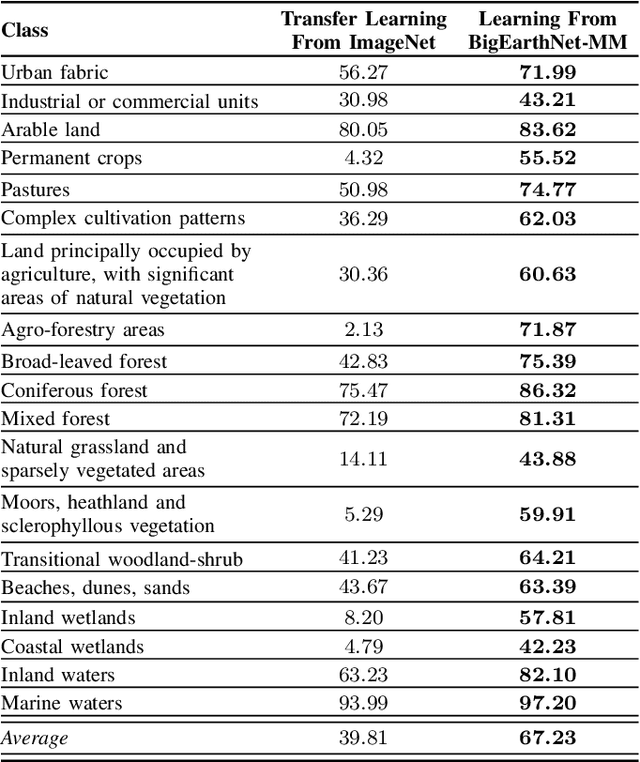

Abstract:This paper presents the multi-modal BigEarthNet (BigEarthNet-MM) benchmark archive made up of 590,326 pairs of Sentinel-1 and Sentinel-2 image patches to support the deep learning (DL) studies in multi-modal multi-label remote sensing (RS) image retrieval and classification. Each pair of patches in BigEarthNet-MM is annotated with multi-labels provided by the CORINE Land Cover (CLC) map of 2018 based on its thematically most detailed Level-3 class nomenclature. Our initial research demonstrates that some CLC classes are challenging to be accurately described by only considering (single-date) BigEarthNet-MM images. In this paper, we also introduce an alternative class-nomenclature as an evolution of the original CLC labels to address this problem. This is achieved by interpreting and arranging the CLC Level-3 nomenclature based on the properties of BigEarthNet-MM images in a new nomenclature of 19 classes. In our experiments, we show the potential of BigEarthNet-MM for multi-modal multi-label image retrieval and classification problems by considering several state-of-the-art DL models. We also demonstrate that the DL models trained from scratch on BigEarthNet-MM outperform those pre-trained on ImageNet, especially in relation to some complex classes, including agriculture and other vegetated and natural environments. We make all the data and the DL models publicly available at https://bigearth.net, offering an important resource to support studies on multi-modal image scene classification and retrieval problems in RS.
A Novel Uncertainty-aware Collaborative Learning Method for Remote Sensing Image Classification Under Multi-Label Noise
May 12, 2021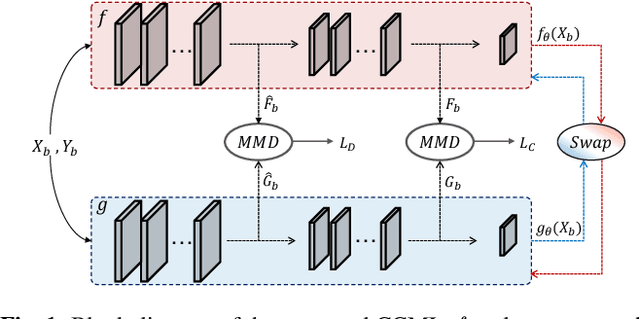
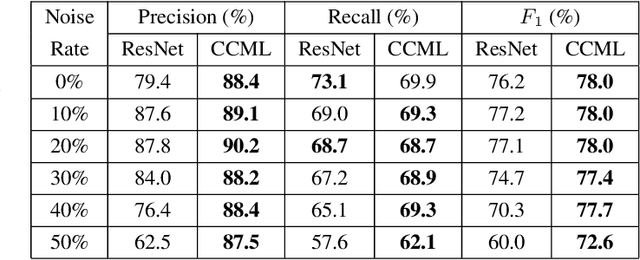

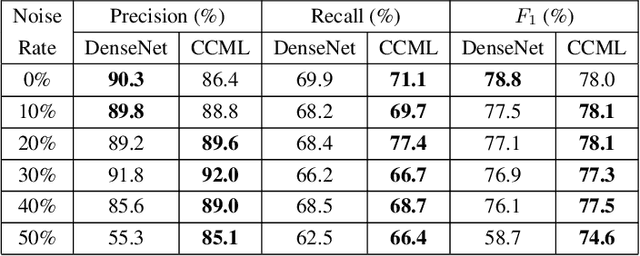
Abstract:In remote sensing (RS), collecting a large number of reliable training images annotated by multiple land-cover class labels for multi-label classification (MLC) is time-consuming and costly. To address this problem, the publicly available thematic products are often used for annotating RS images with zero-labeling cost. However, in this case the training set can include noisy multi-labels that distort the learning process, resulting in inaccurate predictions. This paper proposes an architect-independent Consensual Collaborative Multi-Label Learning (CCML) method to train deep classifiers under input-dependent (heteroscedastic) multi-label noise in the MLC problems. The proposed CCML identifies, ranks, and corrects noisy multi-label images through four main modules: 1) group lasso module; 2) discrepancy module; 3) flipping module; and 4) swap module. The group lasso module detects the potentially noisy labels by estimating the label uncertainty based on the aggregation of two collaborative networks. The discrepancy module ensures that the two networks learn diverse features, while obtaining the same predictions. The flipping module corrects the identified noisy labels, and the swap module exchanges the ranking information between the two networks. The experiments conducted on the multi-label RS image archive IR-BigEarthNet confirm the robustness of the proposed CCML under extreme multi-label noise rates.
A Novel Triplet Sampling Method for Multi-Label Remote Sensing Image Search and Retrieval
May 08, 2021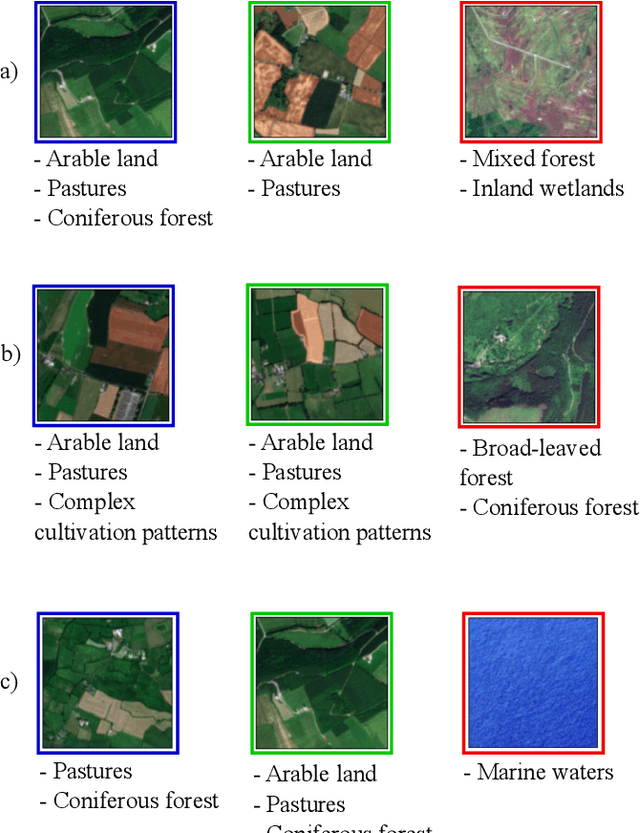
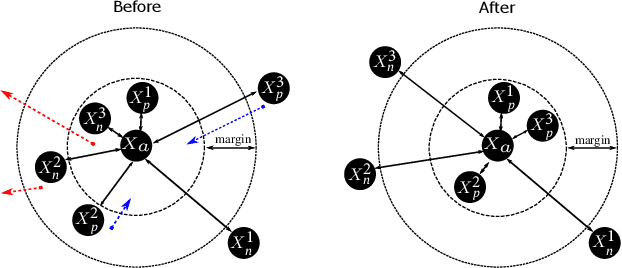
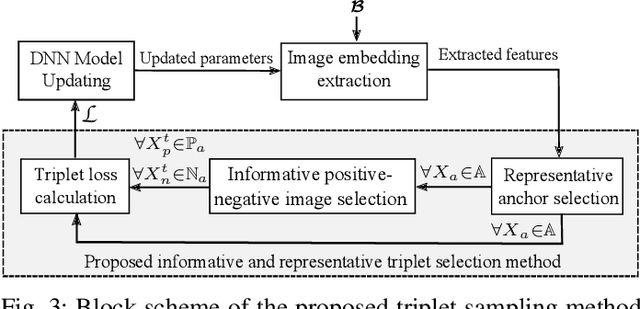
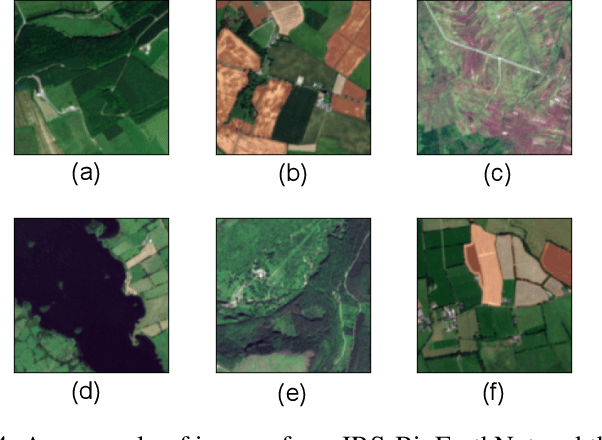
Abstract:Learning the similarity between remote sensing (RS) images forms the foundation for content based RS image retrieval (CBIR). Recently, deep metric learning approaches that map the semantic similarity of images into an embedding space have been found very popular in RS. A common approach for learning the metric space relies on the selection of triplets of similar (positive) and dissimilar (negative) images to a reference image called as an anchor. Choosing triplets is a difficult task particularly for multi-label RS CBIR, where each training image is annotated by multiple class labels. To address this problem, in this paper we propose a novel triplet sampling method in the framework of deep neural networks (DNNs) defined for multi-label RS CBIR problems. The proposed method selects a small set of the most representative and informative triplets based on two main steps. In the first step, a set of anchors that are diverse to each other in the embedding space is selected from the current mini-batch using an iterative algorithm. In the second step, different sets of positive and negative images are chosen for each anchor by evaluating relevancy, hardness, and diversity of the images among each other based on a novel ranking strategy. Experimental results obtained on two multi-label benchmark achieves show that the selection of the most informative and representative triplets in the context of DNNs results in: i) reducing the computational complexity of the training phase of the DNNs without any significant loss on the performance; and ii) an increase in learning speed since informative triplets allow fast convergence. The code of the proposed method is publicly available at https://git.tu-berlin.de/rsim/image-retrieval-from-triplets.
CCML: A Novel Collaborative Learning Model for Classification of Remote Sensing Images with Noisy Multi-Labels
Dec 27, 2020
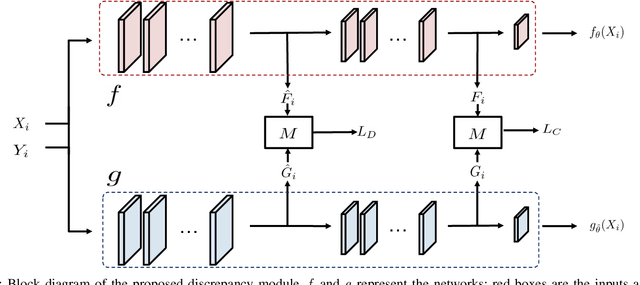
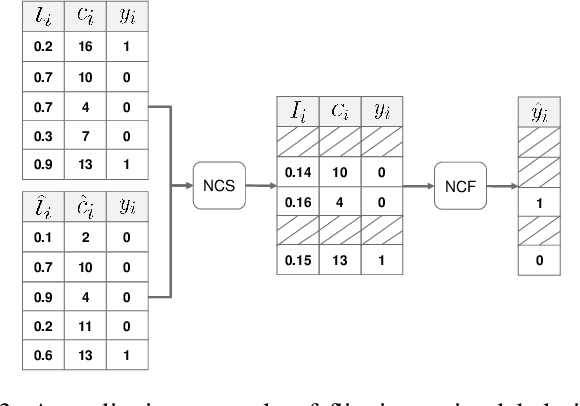
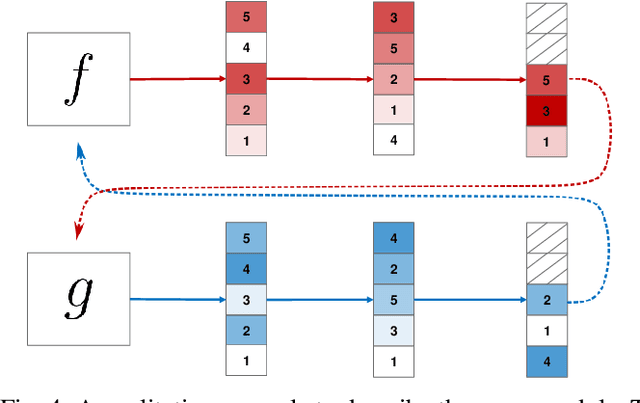
Abstract:The development of accurate methods for multi-label classification (MLC) of remote sensing (RS) images is one of the most important research topics in RS. Deep Convolutional Neural Networks (CNNs) based methods have triggered substantial performance gains in RS MLC problems, requiring a large number of reliable training images annotated by multiple land-cover class labels. Collecting such data is time-consuming and costly. To address this problem, the publicly available thematic products, which can include noisy labels, can be used for annotating RS images with zero-labeling cost. However, multi-label noise (which can be associated with wrong as well as missing label annotations) can distort the learning process of the MLC algorithm, resulting in inaccurate predictions. The detection and correction of label noise are challenging tasks, especially in a multi-label scenario, where each image can be associated with more than one label. To address this problem, we propose a novel Consensual Collaborative Multi-Label Learning (CCML) method to alleviate the adverse effects of multi-label noise during the training phase of the CNN model. CCML identifies, ranks, and corrects noisy multi-labels in RS images based on four main modules: 1) group lasso module; 2) discrepancy module; 3) flipping module; and 4) swap module. The task of the group lasso module is to detect the potentially noisy labels assigned to the multi-labeled training images, and the discrepancy module ensures that the two collaborative networks learn diverse features, while obtaining the same predictions. The flipping module is designed to correct the identified noisy multi-labels, while the swap module task is devoted to exchanging the ranking information between two networks. Our code is publicly available online: http://www.noisy-labels-in-rs.org
BigEarthNet Dataset with A New Class-Nomenclature for Remote Sensing Image Understanding
Feb 18, 2020



Abstract:This paper presents BigEarthNet that is a large-scale Sentinel-2 multispectral image dataset with a new class nomenclature to advance deep learning (DL) studies in remote sensing (RS). BigEarthNet is made up of 590,326 image patches annotated with multi-labels provided by the CORINE Land Cover (CLC) map of 2018 based on its most thematic detailed Level-3 class nomenclature. Initial research demonstrates that some CLC classes are challenging to be accurately described by considering only Sentinel-2 images. To increase the effectiveness of BigEarthNet, in this paper we introduce an alternative class-nomenclature to allow DL models for better learning and describing the complex spatial and spectral information content of the Sentinel-2 images. This is achieved by interpreting and arranging the CLC Level-3 nomenclature based on the properties of Sentinel-2 images in a new nomenclature of 19 classes. Then, the new class-nomenclature of BigEarthNet is used within state-of-the-art DL models in the context of multi-label classification. Results show that the models trained from scratch on BigEarthNet outperform those pre-trained on ImageNet, especially in relation to some complex classes including agriculture, other vegetated and natural environments. All DL models are made publicly available at http://bigearth.net/#downloads, offering an important resource to guide future progress on RS image analysis.
 Add to Chrome
Add to Chrome Add to Firefox
Add to Firefox Add to Edge
Add to Edge